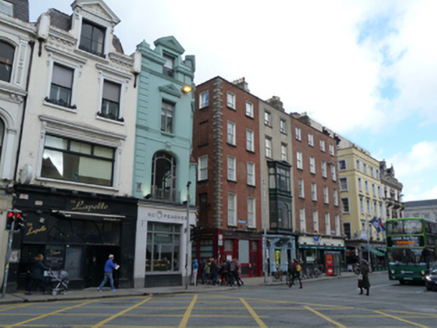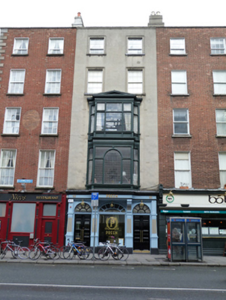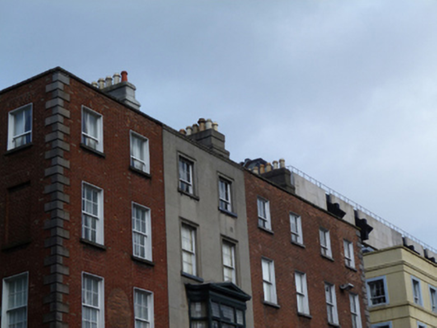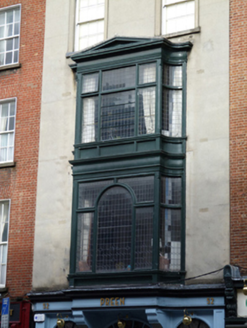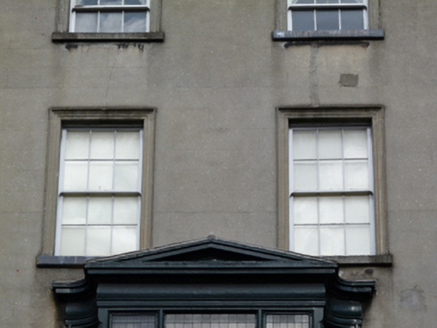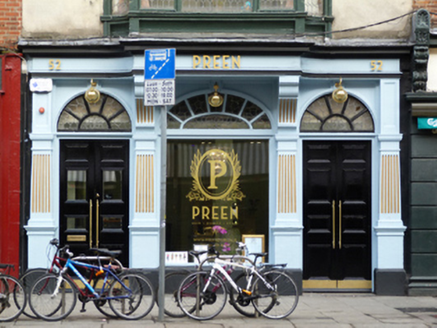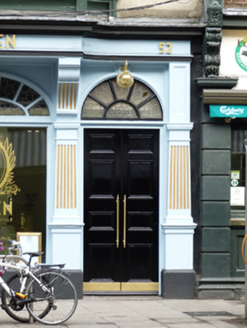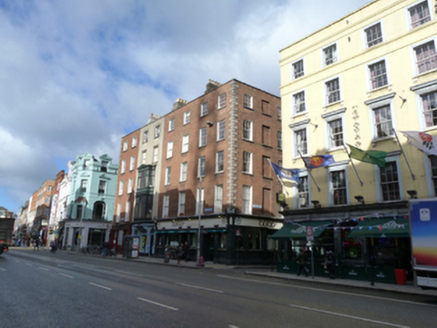Survey Data
Reg No
50020144
Rating
Regional
Categories of Special Interest
Architectural, Artistic, Historical, Social
Previous Name
Frederick Sutton And Co. Solicitors
Original Use
Office
In Use As
Shop/retail outlet
Date
1775 - 1795
Coordinates
315665, 234058
Date Recorded
24/02/2015
Date Updated
--/--/--
Description
Terraced two-bay five-storey over basement former house, built c.1785, with shopfront to front (south) elevation. Façade remodelled c.1900. Now in use as retail outlet and flats. M-profile pitched roof, hidden behind rendered parapet having carved granite coping, with rendered chimneystacks having clay pots. Lined-and-ruled rendered walls with masonry plinth course. Double-height oriel window with fixed pane leaded windows to first and second floors having carved cornices, carved timber pediment, timber panelled apron. Square-headed window openings with moulded architraves, granite sills and six-over-six pane and six-over-three pane timber sliding sash windows to third and fourth floors. Shopfront comprising fluted masonry pilasters and brackets supporting stepped fascia and cornice, surrounding plain square-headed display window with elliptical–headed leaded fanlight, flanked by round-headed door openings with double-leaf timber panelled and half-glazed timber panelled doors and leaded spoked fanlights. Located to north side of Dame Street.
Appraisal
This building was occupied by Manley & Son, Government Stockbrokers in 1894 and Fred Sutton & Co. Solicitors in 1910. The valuation jumped from £90 to £150 between these dates indicating it was remodelled at this time. The oriel window at the first and second floors is an early twentieth-century addition, and along with the moulded window surrounds, adds subtle interest to the façade. A well-executed symmetrical shopfront lends contextual as well as visual interest to the composition. Dame Street derives its name from a dam that powered a mill on the River Poddle. It was one of the principal streets of the city in the eighteenth century, leading from the Parliament House (now Bank of Ireland) to the Castle. The street was widened and remodelled by Samuel Sproule and Charles Tarrant of the Wide Street Commissioners in the late eighteenth century, and commercial buildings and financial institutions were introduced to the street in the late nineteenth and early twentieth centuries.
